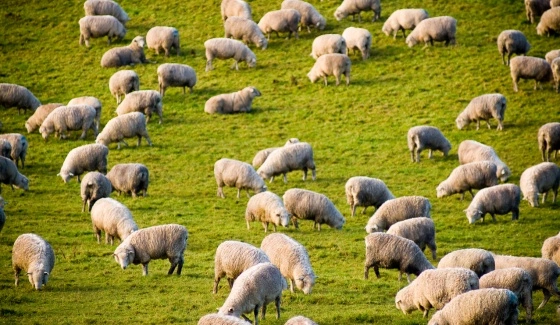
Since 2013, we've been running a central progeny test on behalf of The New Zealand Merino Company and the Merino industry in New Zealand. Any form of progeny testing is fantastic because it is a fantastic demonstration of the power of genetics.
To the best of our ability, everything is kept constant except the sire that is used. In that way, the differences we see in progeny groups, are a direct result of the sires genetics. Luckily for us, Will Gibson, who runs the CPT, is fastidious when it comes to collecting data. So we have a rich data set of information that has been collected with care and accuracy.
One of the traits that is always of interest to me is the difference in the genetic ability to maintain condition. We have a lot to learn about what this means economically and there is a talented WA team working on just that as we speak (more on that in future communication). I think it is great to talk about correlations between traits but it is not until you actually see them play out in real data that they truly hit home. I've been preparing for some presentations coming up and Will kindly provided me with 4 drops of data from the CPT.
There is a total of 169 sires represented over these four years and for each sire I've plotted out the breeding value for either fat or muscle versus the average condition score of that sires daughters, when they reached mating age (roughly 19 months old). The first graph is for yearling fat depth, and while there is obviously some variation, there is clearly a correlation between the two.

A slightly different but basically same story can be seen by comparing the condition score of the ewe progeny with the breeding value for eye muscle depth.

Now these correlations are hardly surprising, the ultrasound scanning that is used to generate the muscling and fat breeding values is completed at exactly the same spot that you condition score animals. We see this play out in a number of ways in commercial farms, sheep that can maintain condition longer in a cold winter or dry summer, sheep that respond quickly when things improve again and sheep that have more lambs that are more likely to get up and live. Essentially the sheep with higher muscle and fat are easier to farm.
Just reiterating, there are 170 sires represented on those graphs, representing every school of thought of breeding there is. There is an enormous variation in the genetic ability for animals to build and maintain condition score. For a long time we didn't really think about this fact. If you are classing sheep without putting your hand on their loin to feel what condition they are in, you are missing half of the story.
There will of course be some scenarios, for example, where sheep are run under low stocking rates and maintain good condition throughout the year, where these attributes are not useful. Like Duncan Campbell discussed around Beef cattle, horses for courses will definitely apply here.
There is plenty of discussion in the industry about the trade-offs of chasing carcass. That will be covered in a future article.




.jpg)




